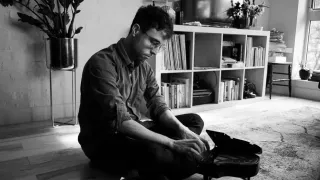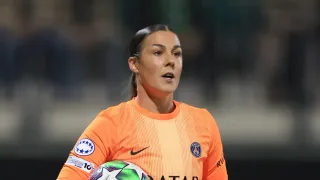March 21, 2023
Review: Thomas Mallon's 'Up With the Sun' a Parable of Doomed Ambition
Brian Bromberger READ TIME: 7 MIN.
If you don't know who Dick Kallman was, you aren't alone. He'd be a formidable challenge as a featured answer on "Jeopardy" or as a Trivial Pursuit question. Readers can discover this miniscule has-been celebrity in the new novel on his tumultuous life, "Up With the Sun" by Thomas Mallon, perhaps the country's foremost historical fiction writer.
Mallon has indeed raised Kallman from the dead, yet how he died is tragically his biggest claim to fame. On February 22, 1980, he, alongside his male lover, were brutally murdered in their tony Manhattan townhouse in a robbery gone awry.
Kallman's career, the events leading up to his sensational murder, and the aftermath including his killer's trial, form the subject of this part show-business history, part crime mystery, part love story saga covering a 30-year gay era extending from pre-Stonewall to the early AIDS pandemic. Gossipy and entertaining, with appearances from authentic Broadway and Hollywood stars, the novel is a moral dissection on closeted-life and how ambition distorts a psyche.
Early Stages
Kallman was born in 1934. His wealthy father owned The Balsams Grand Resort Hotel in New Hampshire and the Savoy-Plaza Hotel in Manhattan. His mother, Zara, had been a minor opera and Broadway actress. She pushed Dick into performing for the older generation show people who populated their hotels. His first success was his supporting performance in the musical "Seventeen," which won him 1951's Theatre World Award as Most Promising Newcomer.
The novel posits that during this stint, he becomes infatuated with lead star Kenneth Nelson, even giving him a small diamond jewelry pin (which will pop up during the book's critical moments and will hold the secret to the motive for his eventual murder), which Nelson rebuffs because he doesn't like Kallman. He never gets over that rejection, a crush that becomes a lifelong obsession. Nelson, one of the stars in the original "Fantasticks" production, is best known to gay audiences as the acerbic Michael in the gay off-Broadway play and movie "The Boys in the Band."
A few years after "Seventeen," Kallman was the warm-up act for singer-actress Sophie Tucker in Las Vegas. He became part of Lucille Ball's comedy troupe workshop in the late 1950s. He toured the country as the lead in the musical "How To Succeed In Business Without Really Trying."
Then he starred in the preposterous television sitcom "Hank" as an orphan impersonating absent students so he could illegally audit classes in an absurd bid to get a college education. Both poor ratings and a negative profile of Kallman in a "TV Guide" article ended the series after one season. This was the zenith of his acting career.
Career Shift
Kallman returned to Broadway taking over the principal role in the musical "Half a Sixpence," and released a few unsuccessful albums of pop standards. He made appearances on comedy and drama TV series, but by the early 1970s disappointment had morphed into an underlying rage, so he retired from show business.
He used his business acumen to design women's fashions and men's wear. With actress Dolores Gray, he founded an antique business (Possessions of Provenance) and despite occasional dishonest information about the merchandise, plus his lack of scruples, it prospered. He also met Steven, a graduate student 20 years younger, who became both spouse and business assistant. In these chapters, there is an omniscient third person narrating flashback highlights of Kallman's career.
In alternating chapters, the (fictional) first-person narrator is Matt Liannetto, a pianist accompanist who met Kallman at "Seventeen" and either worked with him or met up with him sporadically for the rest of his life. He's the sweet-natured foil to Kallman, but who is also trying to understand him, saying, "I'm sorry I can't write more about Dick. I disliked him for all the obvious reasons that most people did."
Liannetto has dinner at Kallman's apartment the night he and Steve were killed. He later identifies, through a vocal lineup, one of the murder suspects. He becomes romantically involved with Devin Arroyo (like Liannetto, a fictional character), a former hustler who works as a clerk at the police department.
Through Matt, we get details of the criminal procedural investigation and trial of the three killers, which is only sporadically intriguing. Towards the end of the novel, Matt, in declining health, shows early symptoms of AIDS (before the virus was named).
Point of Obsession
On stage, Kallman ("a less perfect Tony Curtis") had a pleasing personality, but in private he was driven to the point of obsession; he was nasty, pushy, obsequious with embarrassingly false flattery that came across as phoniness, brassy, self-serving, and a skin-crawling scheming social climber who tossed aside friends at the flip of a coin. Kind of in-and-out-of-the-closet, wearing flamboyant clothes, he called other gay men "pansies" to demean them, implying he wasn't one. He used female beards, like the adult former child actress Margaret O'Brien, to disguise his homosexuality.
At one point he smashed actress Dyan Cannon's finger while touring "How To Succeed" because he thought she was upstaging him. Seeing him at the Golden Globes Awards years later, she screamed, "You sick bastard." Mallon writes that on Kallman, "ambition stuck out like a cowlick or a horn, fatal to an audience's complete belief in almost any character he was playing," meaning he was his own worst enemy.
Yet, despite the obnoxious Kallman, Mallon is able to create empathy for him so the reader feels sorry for him because there is a doomed sadness enveloping the character. Mallon is superb at re-creating the show biz aura and keen 'anything's possible' evocation of the 1950s and 1960s, as well as the trials and accommodations needed to survive being gay in that milieu. Mallon implies Kallman's deep need for love – which he never found – contributed to his aggressively ingratiating personality, which turned off producers, directors, and co-stars.
Mallon hints that homophobia may have also contributed, as Kallman's sexuality was an open secret, despite his good looks and desire to play straight roles. Kallman never made peace with being a minor player, a theme also plaguing talented actors that surface in the novel, like Robert Osborne (later the TMC host), Kaye Ballard, and Carole Cook (who just died three days before her 99th birthday in January), all of who, sought the limelight but never became the bigger stars they should've been.
In one insightful incident, when Kallman attended the legendary 1961 Judy Garland concert at Carnegie Hall, Mallon writes about the mostly gay audience:
"Whatever was broken in these guys was reaching toward and sparking whatever was broken in her... in him [Kallman] there had been something broken, but whatever it was had been soldered over, annealed in a way that left it unreaching and unreachable."
Mallon's investigation of Kallman reads like an autopsy, even though the reader is warned that his story "is inspired by actual events that have been considerably altered by the author's imagination." Yet, there's an authenticity that's both frightening and compelling.
Mallon has pierced the heart of darkness at the root of Kallman's soul. Kallman might deserve to be forgotten, but Mallon's portrait of a thwarted tragic talent as a sour parable on ambition is unforgettable.
"Up With the Sun," by Thomas Mallon, is available from https://www.penguinrandomhouse.com/books/602230/up-with-the-sun-by-thomas-mallon/|www.penguinrandomhouse.comAlfred A. Knopf/Penguin-Random House. $28.00 www.thomasmallon.com
Help keep the Bay Area Reporter going in these tough times. To support local, independent, LGBTQ journalism, consider becoming a BAR member.






